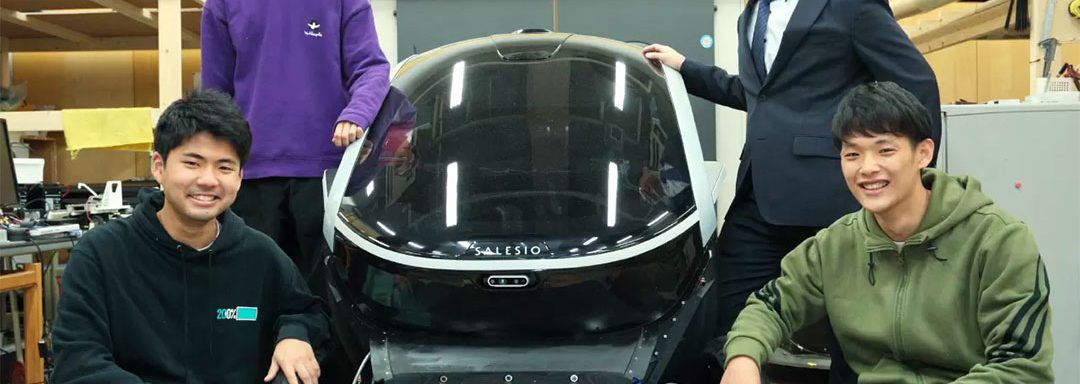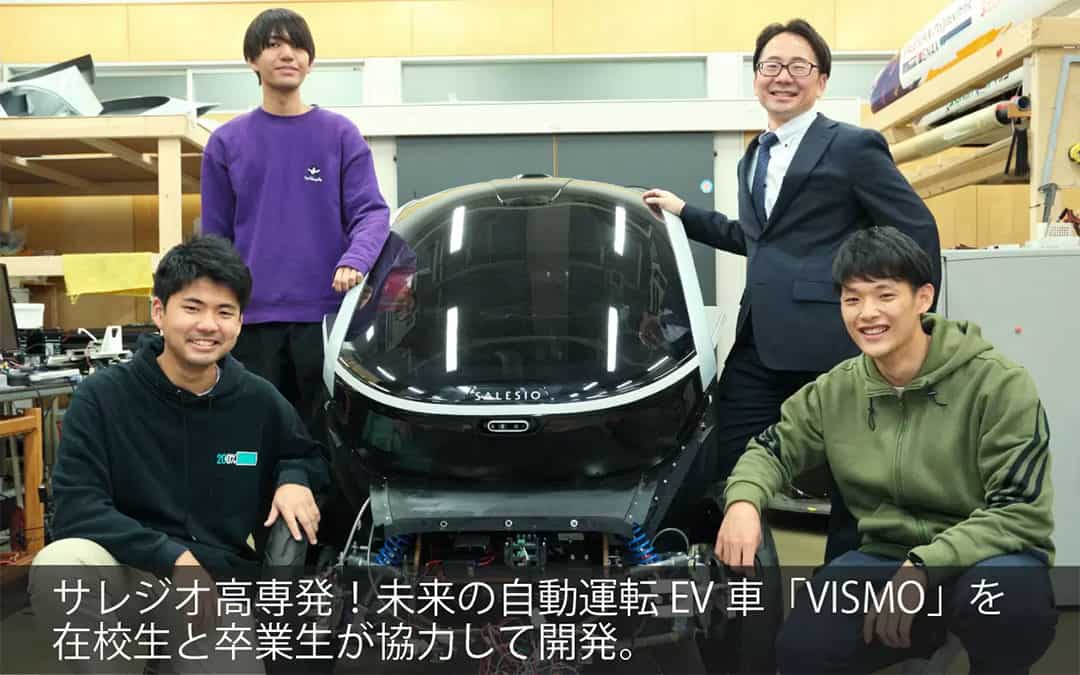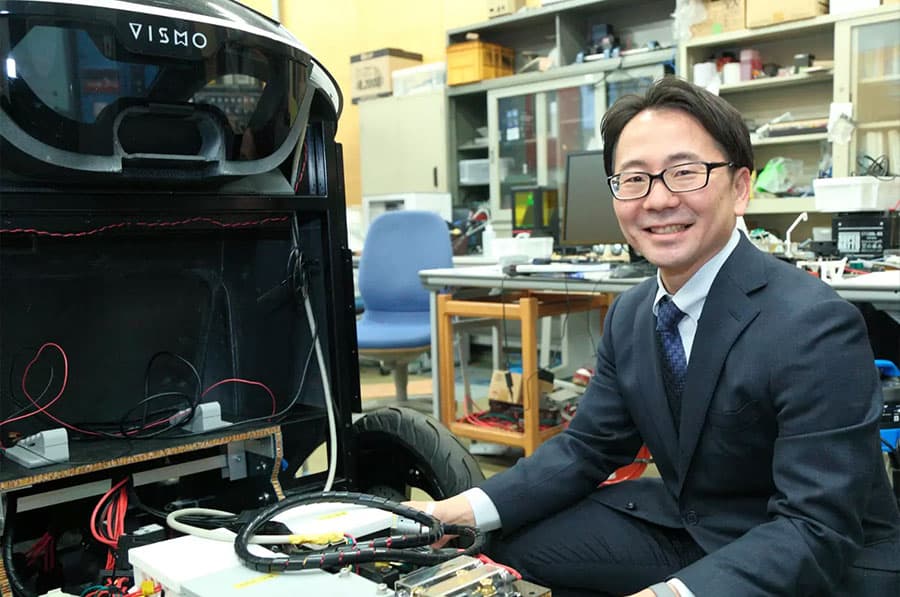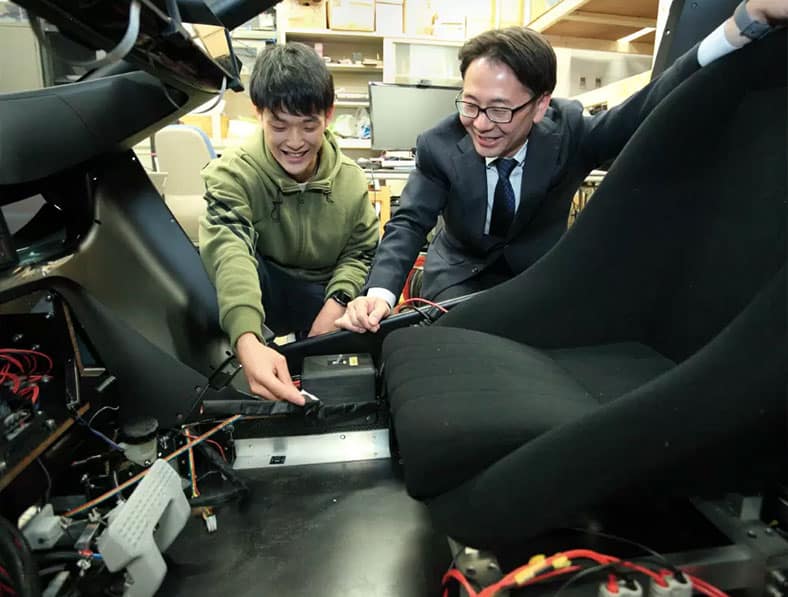(Salesian Polytechnic, Machida Tokyo) – Based on the philosophy of the Salesian Congreation of the Roman Catholic Church, the Salesian Polytechnic College of Technology aims to develop engineers with a rich heart who want to help those in need and serve society. This desire to develop human resources has a great influence on the selection of research and development targets by students.
A symbol of this is the research and development of self-driving electric vehicles (EVs). Today, automobile manufacturers around the world are focusing on developing excellent EV vehicles in order to attract a sustainable society. At the same time, we are also devoted to the development of self-driving vehicles for the purpose of reducing traffic accidents, reducing traffic congestion, and reducing driver fatigue.
Both of these themes are important to society, and automobile manufacturers are competing in development to survive in order to realize a prosperous future society.
From the standpoint of an educational institution that aims to develop young human resources in the hottest arena in the industrial world of such environmental and traffic issues, Salesian College participated in the development of its original self-driving EV “VISMO (VISION + MOBILITY)”. I’m doing it. Based on the desire to be of use to future society, how far have the achievements that the students, who are developers, have been working on so far? We will deliver a report with interviews.
Overview of VISIMO
VISMO is capable of steering both the front and rear wheels to change direction, aiming for future mobility that can freely move forward and backward. The difficulty of development alone is high, the fact that it is an electric vehicle that does not emit exhaust gas, the automatic control system of the vehicle, SLAM that simultaneously estimates self-position and creates an environment map, image recognition, GPS and other sensing systems are integrated. We are aiming for level 3 automated driving that does not require the driver to judge the situation while driving.
It is the students of the Electrical Energy Laboratory (Igumi Laboratory) of the Salesian College of Technology who are responsible for the development. Based on the technology and experience cultivated in the development of solar cars that seniors have challenged, we started developing a completely original self-driving car.
First, we implemented a basic system on an existing electric cart, and while verifying basic controls such as steering as a car, we also developed a mini model equipped with sensors that serve as the eyes of autonomous driving. While repeating functional experiments of image recognition and deep learning with this mini model, we provided feedback to the system design.
Once the basic configuration of the system was solidified, I joined the alumni team in charge of body development. Development is progressing with the backing of graduates who are active at the forefront.
Interview with VISMO development members
Please tell us how you came up with the idea of creating VISMO and how the students got involved.
Mr. Igumi: In the first year of Reiwa, I decided to dig deeper into image recognition technology, and two years ago I decided to make an autonomous vehicle equipped with that technology. For the past seven years, I have been working with students in my laboratory to develop solar cars, and I have accumulated knowledge through races and other events, which have been of great help.
Mr. Omata: I have been inspired by my seniors who have developed solar cars, but the development of self-driving EVs was a big challenge.
The reason why I took up the challenge of developing self-driving cars was because I wanted elderly people who had given up their driver’s licenses in depopulated areas to ride in them. The idea of wanting to help someone became the driving force.
Mr. Suzuki: In development, Professor Igumi shows us the basic direction, but rather than laying down the rails, we students are entrusted with important roles such as image processing and sensor research and development. Masu.
Mr. Chowdhury: It is up to us to identify development issues, collect cutting-edge technologies such as autonomous driving, incorporate them into actual machines, measure characteristics through running tests, and gradually improve the degree of perfection. Masu.
That’s why there are many failures instead of trial and error. I think it’s part of the education and classes that I’m still entrusted with.
Mr. Omata: Since we do everything from design to processing ourselves, we are able to hone our practical skills, such as metal processing with an NC unit (*) and the use of 3D printers.
Please tell us about your respective roles, what technical difficulties you faced, what you worked hard on, and how you overcame them.
Mr. Suzuki: The other members were mainly developing software, and I was in charge of hardware such as circuit design, motors, and the steering mechanism of the suspension. That being said, we don’t make them from scratch, but rather use them while processing motorcycle parts for things like brake master cylinders. Sometimes parts interfered with each other, so it was difficult to put together.
Mr. Omata: I was in charge of developing image recognition technology and distance measurement technology based on it. The difficult part was designing the control program. I use Python, but it was difficult to learn the programming technology itself.
Mr. Chowdhury: I was in charge of remote sensing LiDAR using light. It’s a sensor that can collect point cloud data in real time, but we had a hard time improving the accuracy of the technology that creates a map from that data, measures the distance, and measures its own position. I’ve solved it one by one with my friends and teachers.
Mr. Omata: A senior in the design department was in charge of the body design. It’s a big support to have an alumnus senior help me.
Mr. Igumi: Thanks to the efforts of our students, VISMO is steadily approaching Level 4 automated driving. There are still many issues to be solved, but I would like to quickly publicize to the world that technical colleges can create such amazing mobility of the future.
Please tell us what you think was good for you to study at technical college.
Mr. Omata: It was really good that I was able to learn a wide range of things from circuit design to programming throughout the five years. It is an environment where you can immediately start learning what you want to learn because there are all kinds of equipment for experiments.
Suzuki: I have always liked making things with my hands, and when I was in junior high school, I was obsessed with Lego robots. It was a natural flow for me to take the exam for technical college.
What was more than I expected when I entered the school was that the teachers were very kind and taught me. While thinking together from the same point of view, you can show various points of view.
Ms. Choudhury: The special classes have not changed for five years since I entered the school, so the bonds between my friends have deepened. The teachers were close, and I was grateful for the environment in which I could immediately ask them any technical questions I had.
Salesian College of Technology has many extracurricular activities and projects, and there are many choices, so you can meet the theme that you really want to study. You will be immersed in the real thrill of manufacturing.






